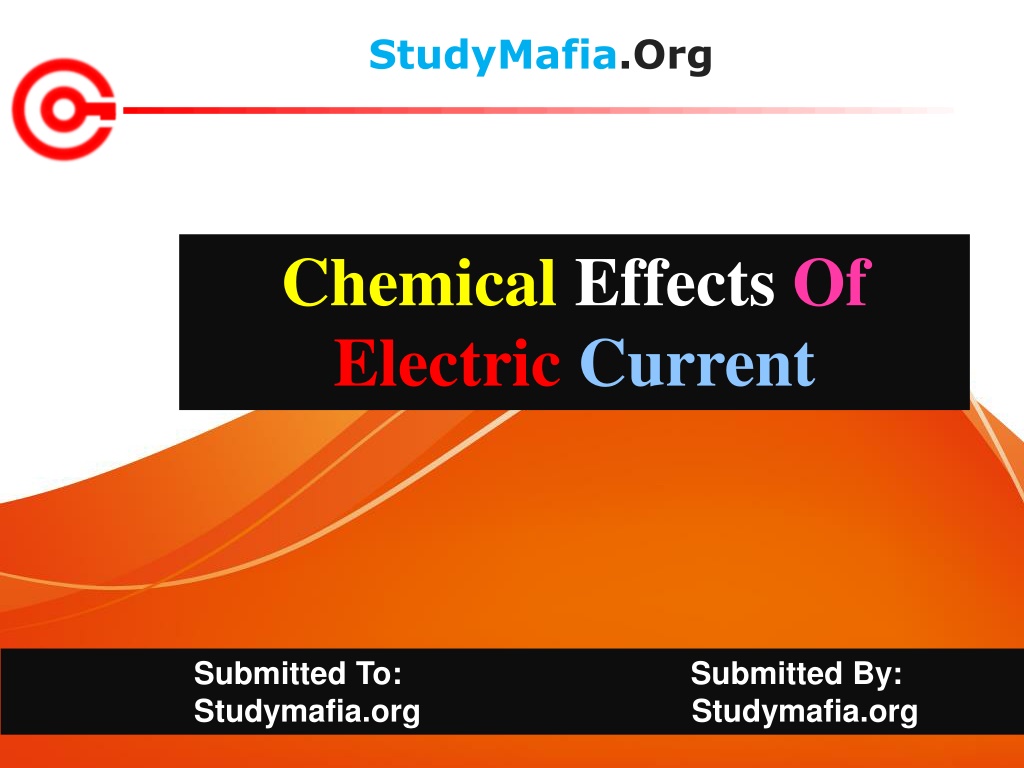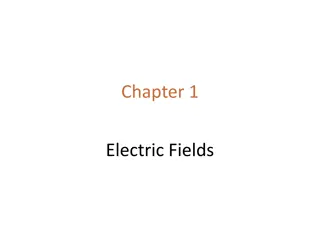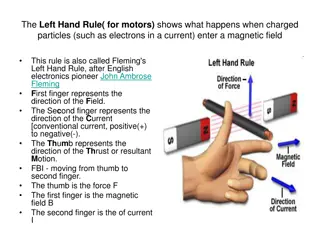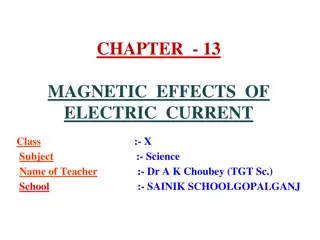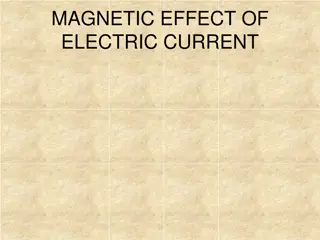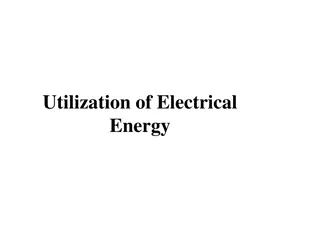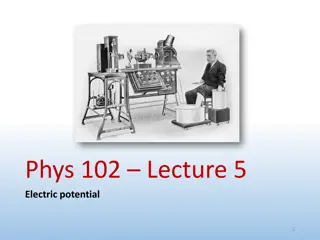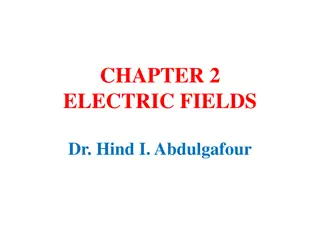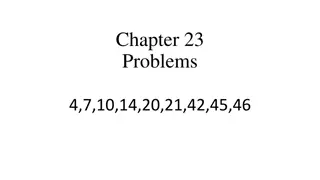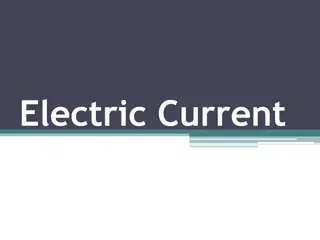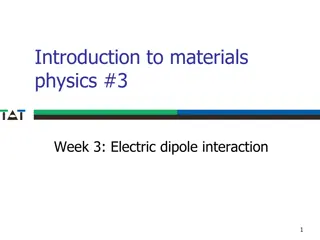Understanding Chemical Effects of Electric Current
The chemical effects of electric current involve reactions in conducting solutions through which an electric current passes. This phenomenon leads to various effects like electroplating, formation of gas bubbles, deposition of metals, and changes in solution color. Conductors play a vital role in allowing the free flow of electric current, with materials like metals being good conductors while rubber and plastics act as bad conductors. Explore the fascinating realm where electricity interacts with chemical solutions to bring about diverse reactions.
Download Presentation

Please find below an Image/Link to download the presentation.
The content on the website is provided AS IS for your information and personal use only. It may not be sold, licensed, or shared on other websites without obtaining consent from the author. Download presentation by click this link. If you encounter any issues during the download, it is possible that the publisher has removed the file from their server.
E N D
Presentation Transcript
StudyMafia.Org Chemical Effects Of Electric Current Submitted To: Submitted By: Studymafia.org Studymafia.org
Table Contents Definition Introduction Conductor Chemical Effects of Electric Current Electroplating Conclusion 2
Definition The chemical reaction that takes place in a conducting solution after passing an electric current through it is called the chemical effect of electric current. 3
Introduction The flow of an electric charge between two points i.e. point A & Point B is electric current. For better understanding Imagine water in a river carrying energy from one place to another. An electric current is capable of producing magnetic effects and chemical effects like electrochemical reactions. Electrons have an electric charge which causes resistors in the light bulbs and electric fires to heat up. 4
Conductor A material, substance or object which allows free flow of electric current is a good conductor. They conduct electricity because they allow electrons to flow within them on an atom level. Conductors are known for easy transmission of light and heat. 6
Conductor Good Conductors Materials that allow electric current a free passage are good conductors of electricity. Bad Conductors Materials that do not allow electric current free passage are bad conductors of electricity. 7
Conductor Some examples of good conductors are metals like copper, aluminium while materials like rubber plastics are bad conductors of electricity. In the case of liquids, some liquids are good conductors of electricity while a couple of are bad conductors of electricity. The water obtained from sources like pumps, wells, ponds, and taps aren't pure and contain several dissolved salts. 8
Chemical Effects of Electric Current Passage of current through chemical solutions causes chemical reactions to require place. Chemical effects include: Formation of gas bubbles at electrodes Deposition of metals at electrodes Changes in solution colour 9
Electroplating It is a process in which a layer of one metal is coated with another metal by electrolysis. 10
Electroplating To coat a silver spoon with gold, we take the acidified solution of the metal to be coated (gold chloride with hydrochloric acid) as electrolyte and the article to be electroplated (silver spoon) is taken as a cathode. Take a thick plate of the metal to be deposited (gold plate) as an anode. 11
Electroplating The silver spoon is cleaned with a dilute acid solution to remove the oxide layer from its surface and washed in running water until it is free from the acid. The silver spoon thus cleaned is suspended in the acidified gold chloride solution (electrolyte) kept in a beaker. 12
Electroplating The silver spoon is cleaned with a dilute acid solution to remove the oxide layer from its surface and washed in running water until it is free from the acid. The silver spoon thus cleaned is suspended in the acidified gold chloride solution (electrolyte) kept in a beaker. A thick plate of gold (taken as an anode) is also suspended in the gold chloride solution. 13
Electroplating The circuit is completed using a battery and key. Let the current pass through it for about 15 minutes and remove the electrodes from the solution. Thus the silver spoon will look like a gold spoon. 14
Electroplating Uses of Electroplating: The most extensive use of gold plating is on jewellery and watch cases. Zinc coatings prevent the corrosion of steel articles. Nickel and chromium-coated articles are used in automobiles and household appliances. 15
Conclusion The consequences are known as the chemical effects of electric current. Example: Whenever an electric current has been carried through a solution of a metal salt, including solutions of copper sulfate, metal however is accumulated at the negatively charged electrode even though the metal would be positively charged. 16
Thanks To StudyMafia.org
